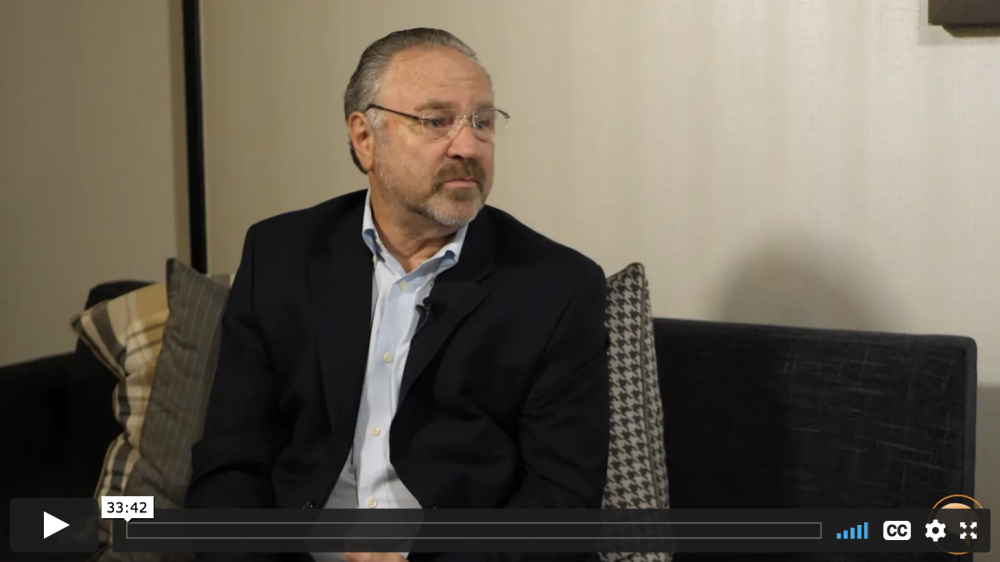
To help us understand this vital question, along with other issues of diagnosis and treatment, we have Dr. Robert Cowan from Stanford Medical School. Dr. Cowan is the chief for the Division of Headache Medicine, where they use an interdisciplinary approach to headache treatment. Dr. Cowan is heavily involved in research and is actively publishing new findings and conducting lectures internationally at headache conferences to raise awareness to educate clinicians and patients.

Pictured: Robert Cowan, MD,
Chief of Headache Medicine and Headache SpecialistStanford University
Why is it so difficult to diagnose migraine accurately?
Dr. Cowan: There are several reasons. General physicians and even neurologists have very little training in headache, even though it’s the most common neurologic complaint in the emergency room. Most physicians are not well trained in it; at best, they may have a general idea that severe headaches are migraines and trivial headaches are tension-type headaches. These contribute to the problem of both misdiagnosis and underdiagnosis — which is a diagnosis of “it’s just a headache.”
Should people who have episodic migraine — which is infrequent and may not be very severe — still go to the doctor?
Dr. Cowan: If they only have occasional headaches and they’re adequately treated with over-the-counter medicines, seeing a doctor may not be necessary. However, like most diseases, if migraine isn’t treated appropriately, the condition will get worse. Two headaches a month can quickly creep up to a headache every week, then two headaches a week, and so on. It develops into chronic migraine, which means that individuals have headaches more days than not.
According to a recent study by the Mayo Clinic, fewer than 50% of people with chronic migraine — which is very frequent and may be disabling — see a doctor about their migraines. Is that concerning?
Dr. Cowan: Yes, it’s very concerning. When there’s a delay in both diagnosis and treatment, it’s much more difficult for us to take care of the patient when we finally see them. They may be taking ineffective medications or have an inaccurate diagnosis, like sinus headache or tension-type headache. It makes our job more challenging and the patient goes through a lot of unnecessary suffering. On average, it takes about 18 months to get the correct diagnosis and it can cost about $12,000, in addition to missing work and time with friends and family.
Some people with migraine might be diagnosed with a subtype of migraine. What are migraine subtypes?
Dr. Cowan: There are two broad categories — primary headaches and secondary headaches. Secondary headaches develop due to another existing condition, like head trauma or an infection, while primary headaches do not. There are three categories within primary headaches: migraine, tension-type headache, and trigeminal autonomic cephalalgias, which includes conditions like cluster headache. The first challenge is to determine whether a patient has a primary or secondary headache. If it’s a secondary headache, we treat the cause. If it’s a primary headache, we need to differentiate within those three broad categories.
Key questions covered in the interview:
Why do so many people with migraine never go to a doctor or receive a correct diagnosis?
Is it always necessary to see a doctor for infrequent episodic migraine?
What are the migraine subtypes?
What are some of the common misdiagnoses for migraine?
What is subacute intracranial hypotension?
Is medication overuse headache a type of secondary headache?
What is the result when migraine is misdiagnosed?
How is underdiagnosis different from misdiagnosis?
What is the future role of artificial intelligence in diagnosing and treating migraine?
How can we be part of this groundbreaking AI research effort?
Watch Dr. Cowan’s interview preview here or order it as part of the 2020 Migraine World Summit package.
If you previously purchased the 2020 Summit, you are all set to login to watch the full interview.
Email: info@migraineworldsummit.com
Web: www.migraineworldsummit.com
